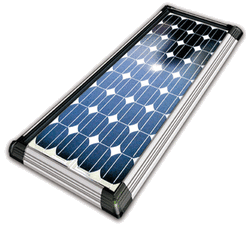The learning curve for solar panel info can be pretty steep.
Some of the most baffling moments can come when trying to decipher solar panel statistics.
Solar panels are rated in a dizzying variety of categories and it can seem like an uphill battle to understand what the numbers actually mean.
So let’s keep this as simple as possible.
The following are some of the main specs you should be looking for when researching solar panel info.
I’ve provided an explanation of each category and what it means to you.
So let’s see if we can make sense of these solar panel numbers!
- Rated Power at STC (Standard Test Conditions)
This measures the power output of a panel when it is receiving 1000 watts per square meter of solar irradiance at 25°C. This is our starting point because this value will be equal to the “advertised” power of the panel. In other words, if you buy a 180 watt solar panel, its rated power at STC will be 180 watts. Simple, right?
- Rated Power Tolerance (%)
This spec tells you the range within which a panel will overperform or underperform. In other words, a panel may say its 180 watts but if its rated power tolerance is +/-5, you could get anything from 189 watts to 171 watts in ideal conditions. What should you be looking for? For maximum power output, look for panels with a small negative number or only a positive number.
- Rated Power Per Sq. Ft. (Watts)
This is a measure of “power density”. The higher the power density the less space you will need to produce a certain amount of power. So if your solar panel has a rated power per sq. ft. of 10 watts, you could get 100 watts out of 10 square feet (10×10=100).
- Module Efficiency (%)
This tells you how efficiently your solar panel creates electricity with the sunlight it receives. If your panel creates 100 watts of electricity when hit with 1000 watts of sunlight, your module efficiency is 10%.

- Materials Warranty (Years)
This tells you how long your solar panel materials and quality are under warranty for. This will usually vary from 1 to 10 years.
- Power Warranty (Years)
This is the warranty on the power output of your module. It is based on the “advertised” or standard test condition power minus the power tolerance. A power warranty often provides two different power guarantees. Typically this will guarantee a 90% power output for a certain amount of time (e.g. 10 years), and then an 80% power output for an extended amount of time (e.g. the next ten years).
- Cell Type
This tells you what type of silicon is used to make the module’s solar cells. The four basic types are:- Monocrystalline
- Multicrystalline
- Ribbon
- Amorphous SiliconMonocrystalline is slightly more efficient than multicrystalline and ribbon but it is also the most expensive. Amorphous silicon is a “thin-film” technology that is the cheapest to produce. It also performs better than the other cell types in shady conditions and high temperatures. The downside? It is the least efficient cell type and could take up twice as much space as the others to produce the same amount of power.
- Maximum Power Temperature Coefficient (% per °C)
This solar panel temperature coefficient info let’s you know how much your panel’s power output will decrease as the temperature rises (In case you weren’t aware: Solar panels create electricity from the light of the sun. Heat actually reduces their power output). If the maximum power temperature coefficient for you panel is -0.5% it means you will lose 0.5% of your power output for every degree the temperature rises above 25°C. This could be especially important if you live in a hot climate.
That wasn’t so bad was it? If you can get a handle on these categories, you’re on your way to getting all the solar panel info you need.
